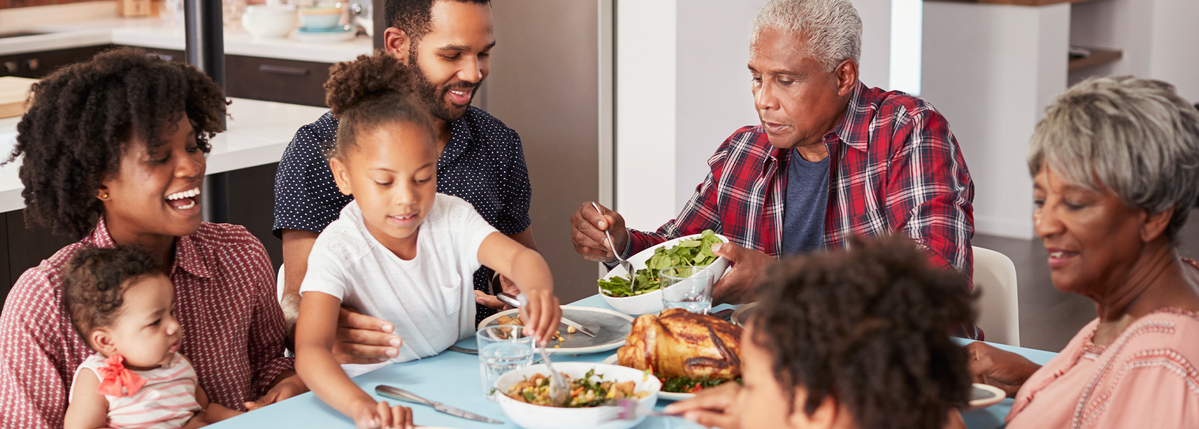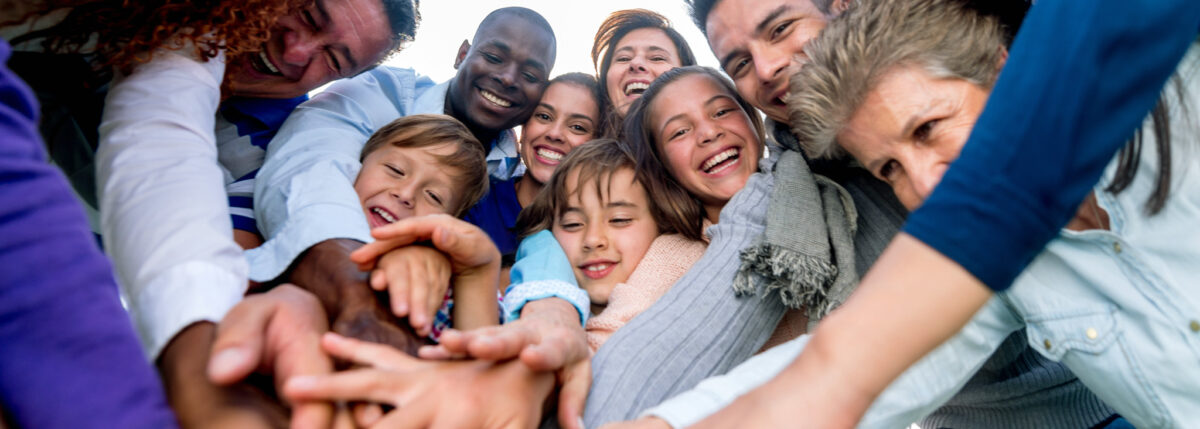Jay Franke: Dancing Professionally with T1D
Written by: Alexi Melvin
6 minute read
February 7, 2019
It would be difficult to achieve more than Jay Franke has in the world of professional dance. After graduating from Booker T. Washington High School for the Performing Arts, and subsequently, receiving his BFA from the Julliard School—Jay’s thrilling career as a professional dancer lasted from age 22 to age 37.
Franke danced with some of the most prestigious dance companies and choreographers in the world, including the Twyla Tharp Dance Company, The 58 Group, Lyric Opera Ballet Chicago and Hubbard Street Dance Chicago. After retiring as a dancer at age 37, he continued to stay involved in the industry as an artistic director and in other capacities. He and his partner, David, now happily split their time between Miami, London, Chicago and Wisconsin.
What some may not know, however, is that this highly adept and talented artist was, at age 30, and at the peak of his career—diagnosed with type 1 diabetes.
Jay sat down with Beyond Type 1 to talk about how he managed to sustain a thriving career in one of the most competitive, rigorous industries in the world, even after a type 1 diagnosis.

What was the moment where it became clear that dance was going to be “it” for you?
I started dancing when I was 11. I’m from Oklahoma, and I saw Singin’ in the Rain with Gene Kelly, and I came home and told my mom and dad, “I wanna be Gene Kelly.” They said, “Oh, yeah. That’s great. You can go to dance lessons with your sister.” My sister hated dancing. She wasn’t very good at it, either. So, I went to dance lessons with her. I walked in the studio and I was like, “This is where I belong.”
What was going on in your life and career when you were diagnosed with Type 1?
I moved to Chicago in 1999 to work with a company called Hubbard Street, where I danced most of my career. So everything was going pretty swell, pretty groovy, until I turned 30, and all of a sudden I started having all these changes that I couldn’t control. I was losing a lot of weight, and thankfully, I was wearing the same costumes night after night, so I would go in to get dressed and I was like, “God, my pants are so loose.” The dresser was like, “I had to put another hole in your belt, your pants are falling off of you, what’s going on?”
And then of course I was having this constant thirst. I was going through gallons of water, and it made it very difficult for me on stage, because I’d be in the middle of a dance, a 30-minute ballet, and I was like, “I gotta go to the bathroom right now.”
So after this three-week run in Chicago I had a break of a week, and during that week, all these same things kept spiraling out of control. I was getting up five times during the night to go to the bathroom, I continued to lose weight. I was having blurry vision. Okay, so if you type in all these things in the computer, there’s a big red sign that says “diabetes” on it. So I went to see my doctor, we did blood work, and of course I was diagnosed with type 1.
Did you immediately worry about your future as a dancer?
Type 1 was something that wasn’t in the cards for me. I felt that way at that moment (of diagnosis). So, I had to take some time to figure out how I was going to live with type 1 and continue my professional career. I’m a problem solver. I think dancers by nature are problem solvers. I’m just wired that way, and I think that when I was faced with this new chapter in my life, I had to just deal with it, because I still wanted to be on stage every night. I still wanted to dance.
I’d say there was about a year in there where things were really difficult for me. Not only emotionally, just trying to deal with this new disease. I was at the height of my professional career and I thought, “I don’t want to lose this. I’ve given my whole life to this, and I just want to be there to enjoy it all.”
What were some of the steps that you took to begin finding a balance?
I had to gain control of the disease, which is what we all have to do, but we all have our own way of doing that, and I had to figure out what works for me. My rehearsal schedule was still going to be insane, I was still going to be touring, I was still going to sometimes be the middle of nowhere trying to find food that I could eat, that was decent and diabetic-friendly, if you will.
It was all under this beautiful umbrella of discipline and staying regimented. I think that one thing that was really key for me, was that I had the same amount of sleep. I woke up, I had the same carb for breakfast, I had a schedule that I just stayed on, that really allowed me more freedom within my day as a dancer.
Dance is all about discipline to begin with, and I realized that I had to incorporate even more discipline within my practice, my daily practice. There were certain things that I had to do as a person with diabetes that allowed me to dance.
One of the things that dance has taught me about is collaboration, and I feel like when I was diagnosed, it was a collaborative effort. It took all the artistic team that I was working with at Hubbard Street. It took my doctor, it took close diabetic friends of mine that became even closer to help me through that and mentor me through that moment. So, I’m very grateful for that collaboration, because it kept me going.
Were any of your friends with diabetes dancers as well?
No, that would have been way too easy (laughing).I think that for most people who find out that they’re diabetic, dancing is a difficult path.
The dance world is very small, so when I was first diagnosed, I put the word out to several friends, just like, “Do you know anybody?” And I was connected with a woman who had been a dancer in New York City Ballet who was type 1. She and I had a nice email exchange for a while, but it was difficult because there wasn’t really a community around me to support that side of me. So I had to forge on my own and make my own path.
Maybe we need an “All T1D Dance Group?”
Hey, I’ll support it! I love the idea.
Do you have a particular T1D role model?
So, initially, one of the greatest mentors to me was a good friend of mine, Ron Santo, who was a former Chicago Cub, type 1 diabetic, and we knew Ron through a friend. When I was diagnosed, I went to meet with Ron. He was the announcer for the Chicago Cubs for a long period of time, so I got to go up and meet with him in the box, and we talked. He would tell me these great stories about when he was playing baseball professionally, and had a low blood sugar, and he was an incredible mentor and guide to me, to help give me hope that, “Okay, I can continue to do what I’m doing, I just need to reorganize myself and think things through differently than I was before.”
What are some ways that you have managed to get involved with the Type 1 community?
Through Ron, we got involved with JDRF in Chicago, and have sponsored—Ron was the main sponsor for the walk for many years, so we continued to sponsor that. And then, another organization I’ve been very involved with is Kovler Diabetes Center, which is a research-driven organization out of the University Chicago. So, I served on the board of Kovler for a while.
How has the landscape of Type 1 management changed since you were diagnosed, and do you think it has gotten better for people with Type 1 who want to dance professionally?
I think technology now has really advanced for young dancers, so I think that would be very beneficial for a young dancer today. For me, I tested all the time. Every five-minute break, every lunch break, I was testing probably, when I was dancing professionally, eight times a day. Eight to 10 times a day. I mean, there would even be moments where I’d have a break offstage during the middle of a piece, and I would test. 
What were some tricks that you had to keep yourself in range while you were onstage or rehearsing?
There are so many factors to it, because your body’s producing a lot of adrenaline, so my blood sugars always ran high when I was on stage. So, it was just a matter of testing. And my dance bag was filled with all kinds of sugar if I needed it. I always had Gatorade, I always had—I still, to this day, carry Skittles onstage if I needed them, in my pocket. Don’t tell the choreographers that! But yeah, I did do that a number of times.
What was one T1D obstacle that you found particularly difficult to adapt to?
It was difficult for me as a dancer to go up to a choreographer and say, “I need a 10-minute break because my blood sugar is low.” It’s counter-productive to the creative process. I had to really get over that. I had to be more courageous, I had to force the situation because in this moment, diabetes came first.
It’s a creative process where the creative muses are in the room, and you don’t want to change the boundaries or impede upon that, creatively. You want it to happen. That was challenging. I actually learned so much more about myself as an artist, being a person with diabetes.
In what ways did T1D impact you as an artist?
It allowed me to step back and just see things in a different way, and realize what really matters, what’s really important. It helped me re-prioritize what was going on, because dance is such a short time span, so your focus can be on just getting to that next performance, or that next job, or whatever. So, it really helped me look at a bigger picture.

Author
Alexi Melvin
Alexi Melvin is a writer, artist and actress in the Bay Area. She also serves as a member of the Beyond Type 1 Leadership Council. Alexi studied at the New School University in Manhattan as well as the Lee Strasberg Theatre & Film Institute. She has written for multiple publications such as the San Francisco Chronicle and has been a regular contributor for Beyond Type 1 for many years. You can also hear her voice in two Star Wars films. She has been a loyal advocate for type 1 diabetes awareness, education and fundraising since she was diagnosed in 2003. She hopes to continue to empower and be a voice for those who choose to embrace type 1 diabetes as a part of their lives, but at the same time, do not allow it to define them. Instagram: @alexienergyart Twitter: @aleximelvin
Related Resources

Editor’s Note: Get involved in Beyond Type 1’s #SeeTheSigns of diabetes campaign! Share your signs to...
Read more

It seems the number of people diagnosed with prediabetes has been progressively increasing. It is...
Read more

Diana Isaacs, PharmD, BCPS, BCACP, BC-ADM, CDCES, is a pharmacist with board certifications in pharmacotherapy,...
Read more

